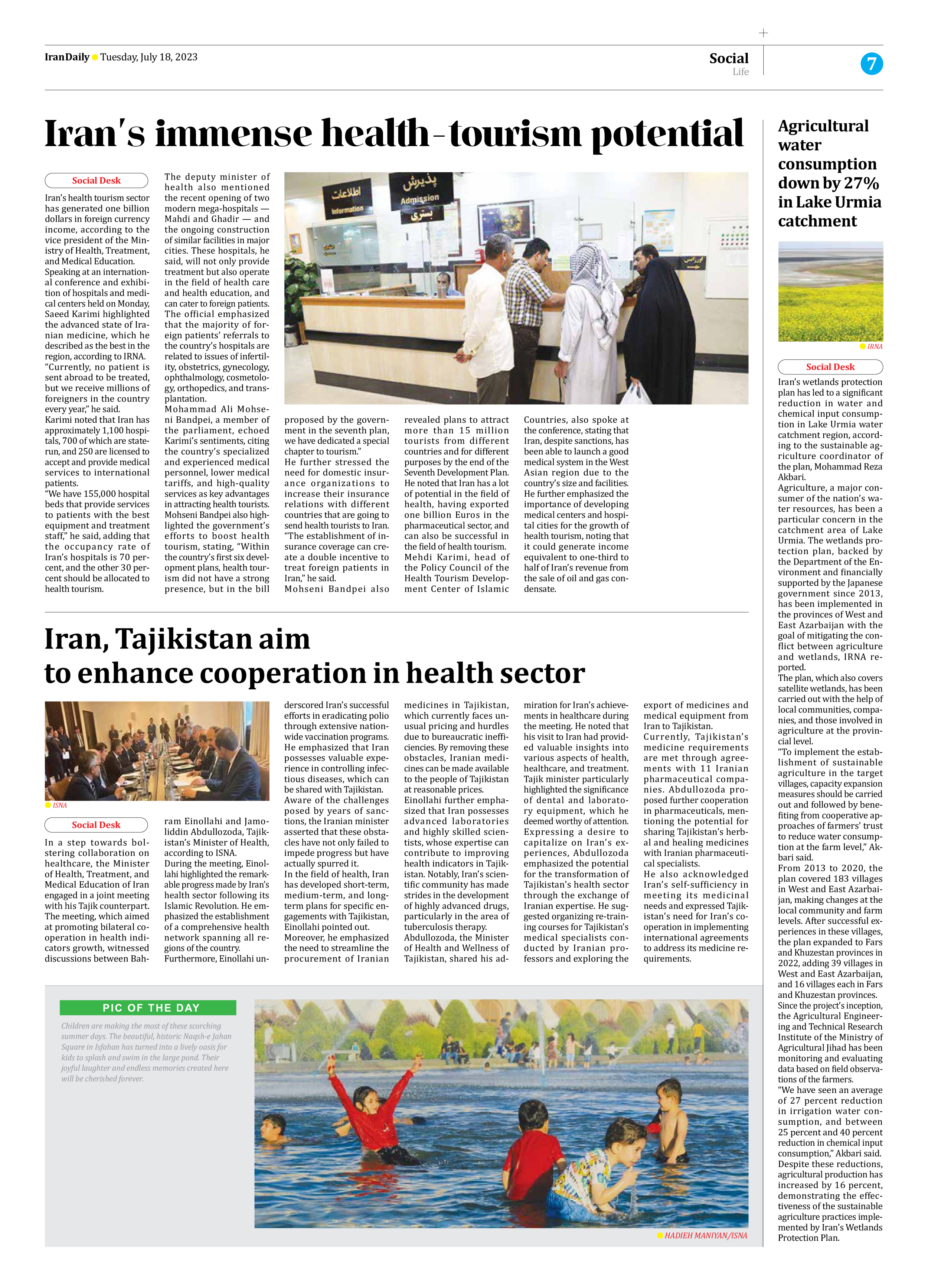
Agricultural water consumption down by 27% in Lake Urmia catchment
Iran’s wetlands protection plan has led to a significant reduction in water and chemical input consumption in Lake Urmia water catchment region, according to the sustainable agriculture coordinator of the plan, Mohammad Reza Akbari.
Agriculture, a major consumer of the nation’s water resources, has been a particular concern in the catchment area of Lake Urmia. The wetlands protection plan, backed by the Department of the Environment and financially supported by the Japanese government since 2013, has been implemented in the provinces of West and East Azarbaijan with the goal of mitigating the conflict between agriculture and wetlands, IRNA reported.
The plan, which also covers satellite wetlands, has been carried out with the help of local communities, companies, and those involved in agriculture at the provincial level.
“To implement the establishment of sustainable agriculture in the target villages, capacity expansion measures should be carried out and followed by benefiting from cooperative approaches of farmers’ trust to reduce water consumption at the farm level,” Akbari said.
From 2013 to 2020, the plan covered 183 villages in West and East Azarbaijan, making changes at the local community and farm levels. After successful experiences in these villages, the plan expanded to Fars and Khuzestan provinces in 2022, adding 39 villages in West and East Azarbaijan, and 16 villages each in Fars and Khuzestan provinces.
Since the project’s inception, the Agricultural Engineering and Technical Research Institute of the Ministry of Agricultural Jihad has been monitoring and evaluating data based on field observations of the farmers.
“We have seen an average of 27 percent reduction in irrigation water consumption, and between 25 percent and 40 percent reduction in chemical input consumption,” Akbari said.
Despite these reductions, agricultural production has increased by 16 percent, demonstrating the effectiveness of the sustainable agriculture practices implemented by Iran’s Wetlands Protection Plan.







